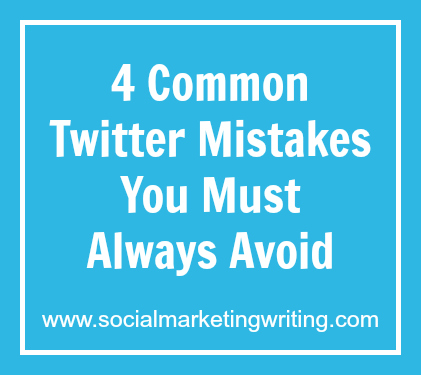This is a guest post by Susie Brown of FastUpFront.
When it comes to Twitter, you’ve got a nice avatar, perfect profile and you’ve mastered your brand message, but what about how you share that message? Think about it this way: If Twitter were real life, what would your Twitter feed look like? There are some things that are ill advised to do in the Twitterverse. If you want to avoid your followers dropping like flies, the next time you feel a tweet coming on, consider avoiding these common Twitter mistakes…
1. Although it’s good to reach out to new followers, the dreaded auto direct message on Twitter leaves a taste of SPAM:
If you take it into real life, it’s like receiving an email from a friend telling you that they really like your new car, only to send them back a quick auto response that asks them to go like your Facebook page instead of responding to the content of the email.
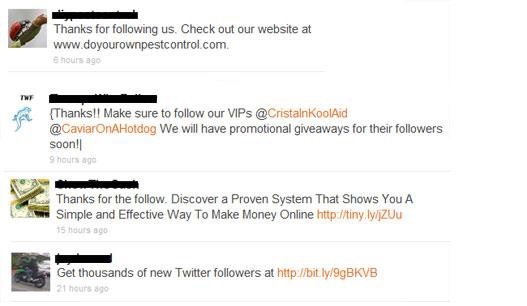
Most Twitter users are wise to robotic auto DMs and see them as a nuisance. Auto DMs are usually impersonal, tend to come off as SPAM and are typically contextually irrelevant. In many cases, auto DMs can lead to your users reporting you to Twitter, un-following or even blocking you. Remember, your Twitter followers love recognition by brands — when it happens publicly. If it’s happening as an auto DM, you’re doing something wrong. (Even Twitter thinks so!)
2. Your followers love you, but retweeting every compliment is preaching to the choir:
Let’s say you’re walking around your office after a sparkling yearly review and every few minutes you shout out another amazing thing your boss had to say about you. You might be asking for a pummeling from your coworkers.

Your followers chose to follow your brand and they did so because they believe in the brand and are happy to be brand evangelists. So respect your followers by not bragging and retweeting every compliment. It’s good to respond to tweets of praise with a quick “Hey, thanks!” or to DM your fans to give them a little love when they reach out, but make it personal. If there is a special shining compliment that you think will benefit all of your followers, go ahead and retweet it — but make sure to add value by adding a comment to the retweet.
3. Over tweeting is a problem in every industry, but you don’t have to succumb:
Imagine walking into Target, only to have an employee approach you every five minutes to share a company fact or special deal. Would you stick around or high-tail it out of there? How often should you tweet? Most studies show that two to five times per day is best.
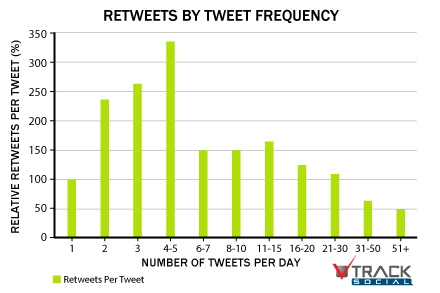
Following this rule, in 2012 Track Social found that major brands got more retweets (up to 300 percent) compared to brands that tweet once a day, let alone upwards of 50 times a day.
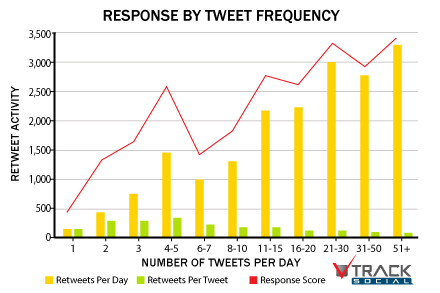
That being said, tweet quality still reigns supreme. The reason people follow your brand is because they think that by following you they’ll receive content that adds value to their lives. Don’t sully that relationship just because you think you have to keep their feeds busy with your brand’s name. Less is more in the world of Twitter and your followers will be more likely to share less-frequent, quality content.
4. Too many hashtags:
You’re out with friends at a bar telling them about the stellar job interview you just had. You follow up your story about jazzing the HR Director with clichés about hard work. A dozen “Early bird gets the worm” clichés later and you’re alone at the bar.

Despite their power, hashtags tend to be a downfall for many Twitter users and brands because of the volume with which they’re used, and with Facebook hopping on the bandwagon, things are only going to get worse.
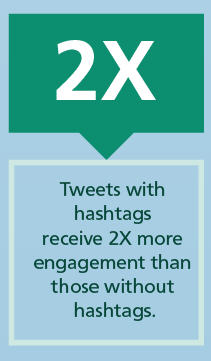
Tweets with hashtags usually receive two times more engagement than those without.
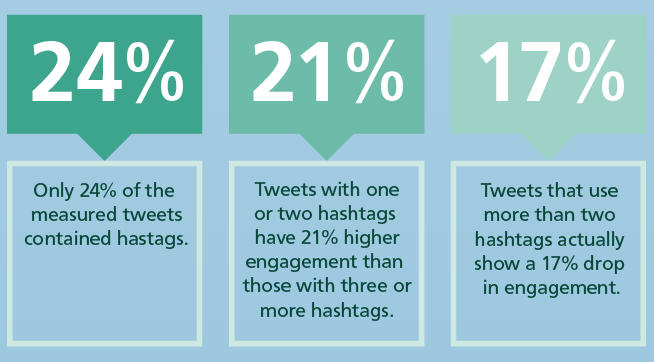
Have you noticed any other common Twitter mistakes? How can people avoid them? Please leave your comments in the comments box below.
If you found the above post on the common Twitter mistakes you must avoid helpful and think your followers will too, please share it with them by clicking on the tweet and share buttons below.
About Susie Brown
Susie Brown is a FastUpFront Blog contributor and business author. Fastupfront offers working capital solutions to small businesses. Visit FastUpFront
